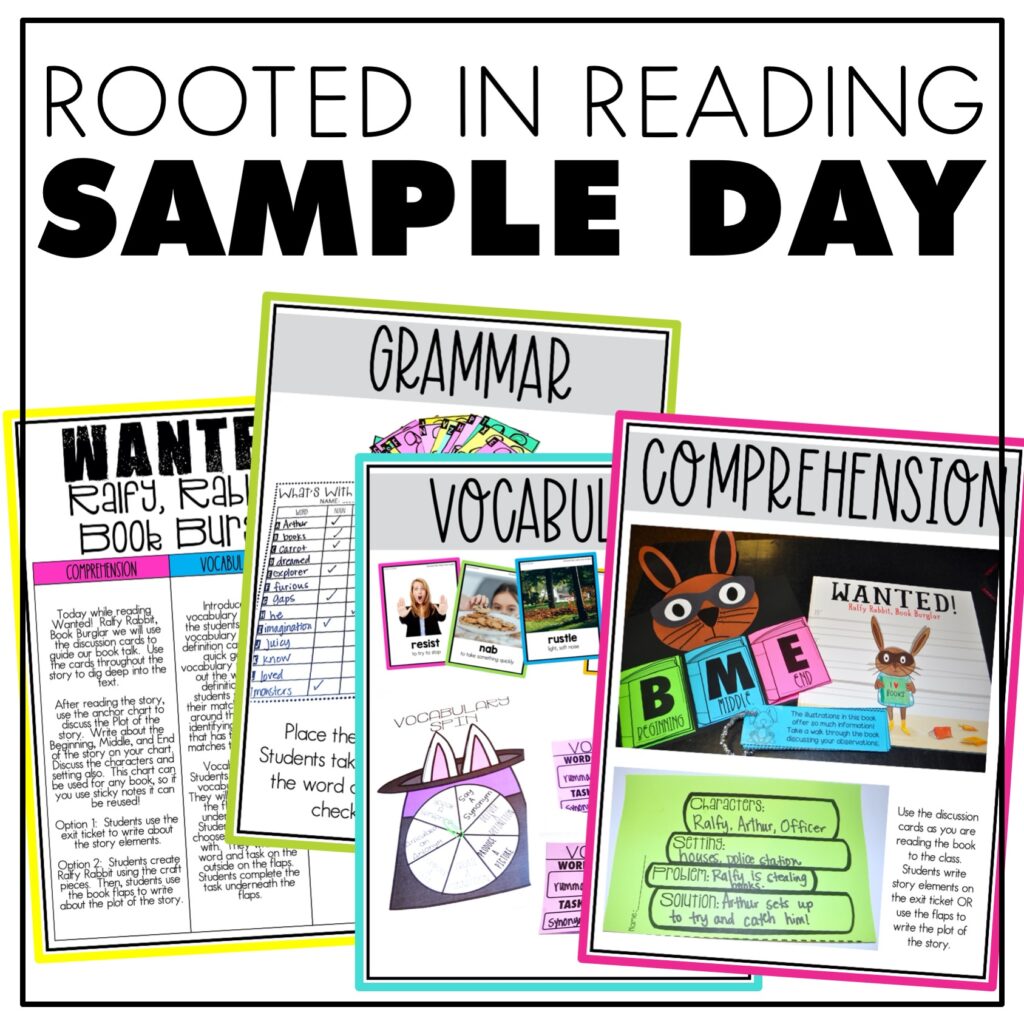

Let me set the stage for you. You just got done pouring your heart and soul into a read-aloud. You gave it your all. You used different voices. Your expression was on point. You stopped for discussion throughout the read-aloud, making sure to think aloud so students better understand the text and characters.
Now it’s time to pull out your “after reading” book questions to have a classroom discussion and you ask your students to describe the character.
They respond. “She is good.” They say. “He was bad.” They say.
Can you relate to that scenario? I know I can. I’ve been there more times than I would like.
However, through purposeful lessons and focusing on deepening comprehension, you don’t have to be stuck there. Students can move beyond shallow descriptions to a full understanding of characters and their motivations.
Here are five ways to expand your lessons and implement activities for analyzing characters that move beyond the surface level.
Describing characters involves looking closely at both their actions and appearances. As we discuss character analysis, students should understand first that characters are much like the people in their lives. They have personalities. They have unique character traits. They have specific interests. There is a reason why characters do what they do.
Using that as a starting point, you can focus on the following key points when introducing how to describe characters:
Consider using this character trait chant to help students internalize this concept and have a reference point during lessons on analyzing characters.
Continuing on that same train of thought, you can move on to teaching students how to distinguish the difference between internal and external traits.
External traits are visible traits of a character. This is how the character looks. For example, a character may have curly hair, wear glasses, or be very tall.
Internal traits are the invisible traits that reveal a character’s personality, thoughts, and feelings. This is where we look at how a character feels, acts, thinks, and says. We find their motivation with internal character traits.
Here’s an engaging chant you can use to help students better define the differences and understand that characters are more than what they look like.
Once students understand how to think about and describe characters, it’s time to put those skills into practice. Use a favorite book showcasing great character traits and development to make this process easier.
Zombies Don’t Eat Veggies by Megan & Jorge Laceram is a favorite of mine. The entire focus of the book is that the main character Mo is different from the other zombies. He may look like the other zombies, but he has different interests.
A book like this lends itself really well to distinguishing and describing a character’s internal and external traits. With guidance, students will easily be able to identify Mo’s character traits.
This story can also pull in the comprehension skill of describing how a character changes throughout the story. Mo goes from feeling very different and misunderstood to feeling accepted and valued. Plus, kids love a story about zombies!
Check out this free reading of Zombies Don’t Eat Veggies on Storyline Online!
Character development is the perfect comprehension skill to spiral and build upon all year long. As students learn to discuss and write about a character’s feelings, traits, and motivations, they’ll be comfortable revisiting this throughout the year.
There are various ways students can practice identifying character traits. For instance, they can compare multiple characters within a story and notice their similarities and differences, or they can focus on the main character and deep-dive into their character traits.
A kid-friendly graphic organizer paired with an interactive read-aloud is another great way to expand the lesson. Not only is it a wonderful tool for organizing their analysis, but it allows your students to become better readers and develop empathy for different perspectives.
Exit tickets give teachers a quick glimpse into a student’s understanding of character traits. They allow teachers to assess reading comprehension without having to grade an in-depth test.
Students can answer a focused question about a character’s words, actions, or development to assess their understanding of character traits. They can concentrate on identifying a specific character trait with text evidence to support their description.
If you are looking for a quick, easy, no-prep activity that shows mastery of a comprehension skill, these character analysis exit tickets may be just the right thing for you!

Hey, y’all! My name is Amy Lemons and I am passionate about providing students with both engaging and effective standards-based Math and ELA lessons.

Sample a day of Rooted in Reading with these lesson plans and activities for Reading Comprehension, Vocabulary, and Grammar!
One Response
I’m going to apply some of the tips you mentioned here.